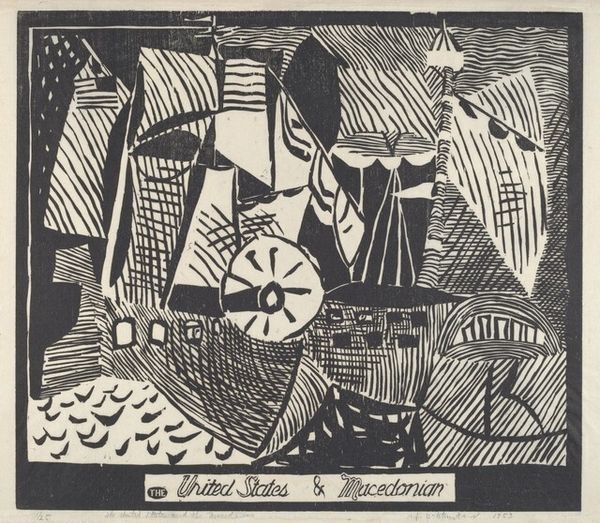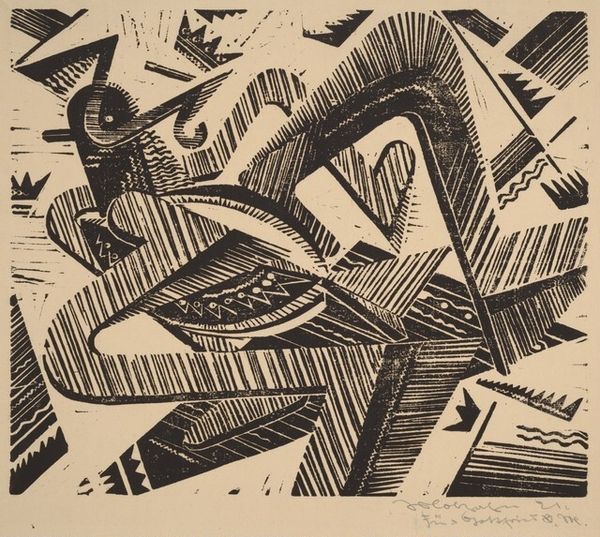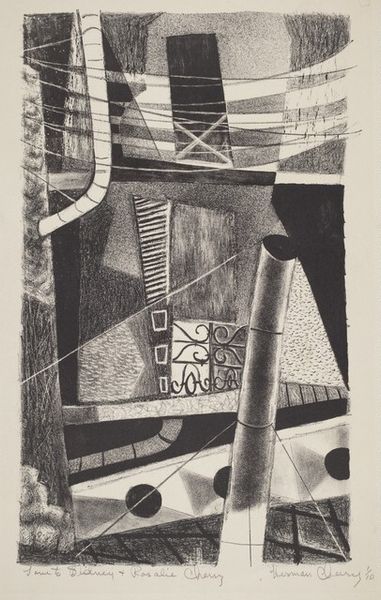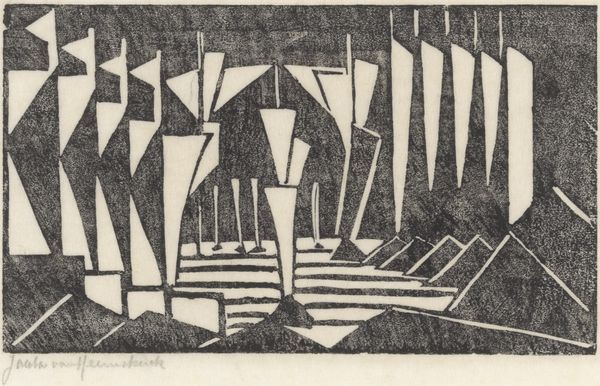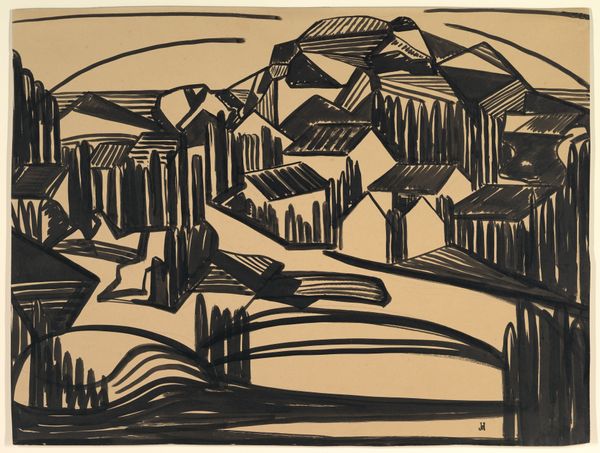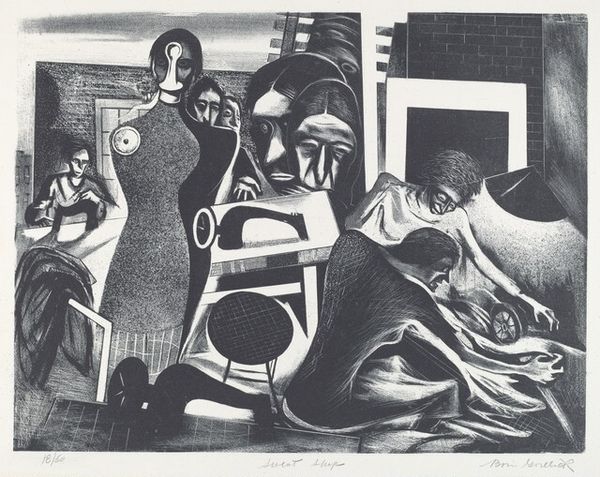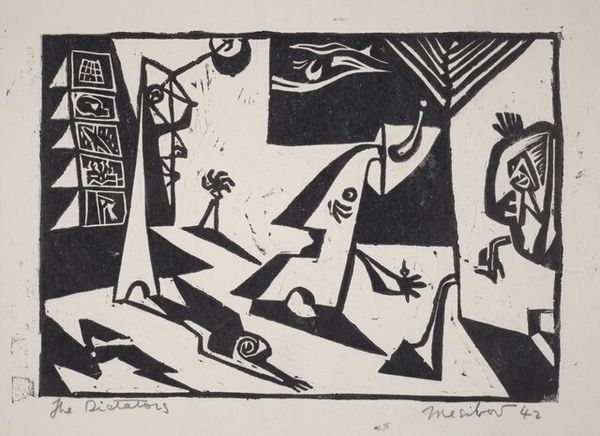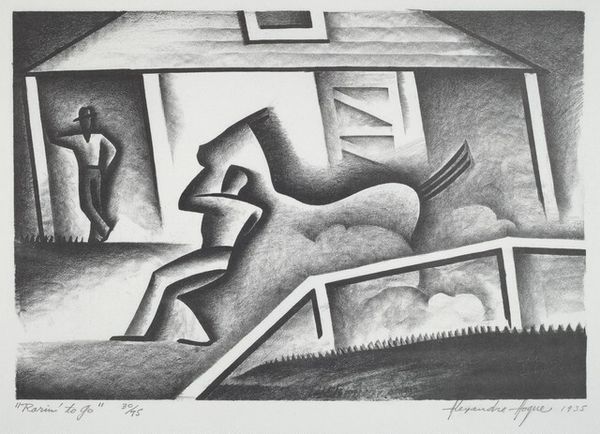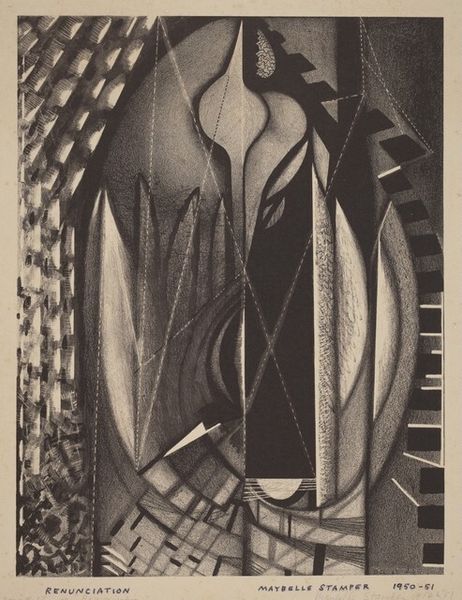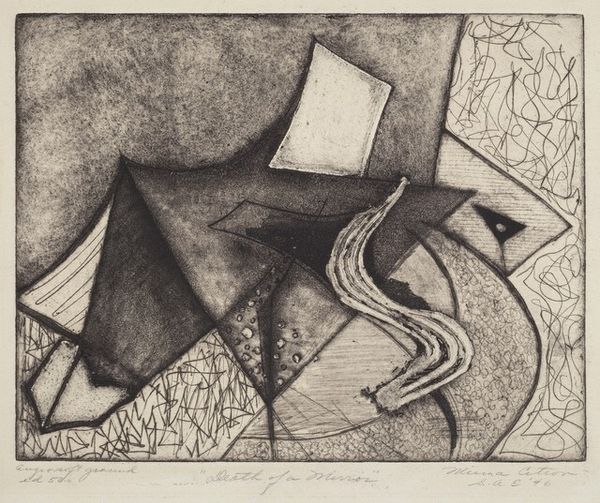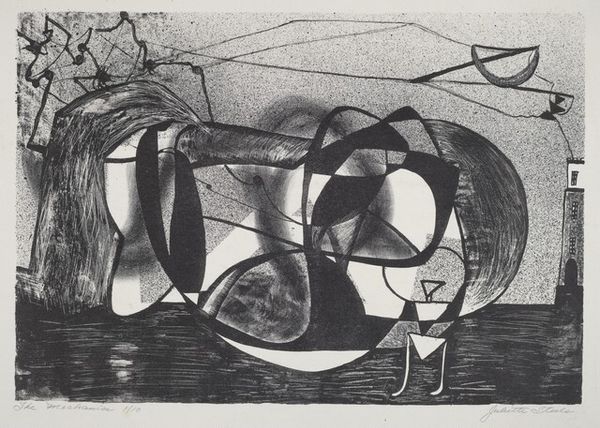
print, woodcut
# print
#
landscape
#
figuration
#
geometric
#
woodcut
#
modernism
Dimensions: block: 149 x 228 mm sheet: 219 x 318 mm
Copyright: National Gallery of Art: CC0 1.0
Curator: Standing before us is Harold Emerson Keeler's woodcut print, "Deforestation," created circa 1939-1941. Editor: Stark. Brutal, even. It’s all angles and shadows, making me feel deeply uneasy. It’s not a soothing landscape, that's for sure. Curator: Precisely. The stark contrast of black and white is inherent in the woodcut technique, lending itself to bold social commentary. Think about the labor involved, the artist meticulously carving away at the block of wood. Editor: That manual labor is front and center, isn't it? You feel it. And the lone figure, presumably the worker, almost swallowed by the scale of what's been lost. I wonder if the black could represent mourning... a sort of funereal palette. Curator: The geometric patterns throughout could be read as a modernist response to the devastation caused by industrialization and extraction. Observe the ways he presents the receding forest as if reduced to an abstract accounting ledger. Editor: Accounting indeed... What is gained versus what is forever destroyed? That lonely tree, upright yet bare in the cleared field, like an accusation! The criss-cross pattern on one plane contrasted with those triangles like stubble – such effective visual cues. It gives you chills! Curator: Yes, Keeler is manipulating his materials expertly to confront the viewer with a harsh reality. Note the very visible presence of the artist’s hand; the carving creates texture but also a feeling of rawness that I imagine was part of the desired affect. Editor: Definitely. Raw and unresolved, a kind of lament in ink. It lingers with you, doesn't it? A stark reminder that the beauty of landscape isn't always picturesque, and that even simple materials like wood and ink can carry heavy emotional weight. Curator: I agree completely. "Deforestation," though relatively small, serves as a powerful example of how printmaking can reflect complex ideas about land, labor, and progress during a period of massive change. Editor: It certainly underscores the cost of things – an echo across the years. Something I won’t easily forget after seeing it here today.
Comments
No comments
Be the first to comment and join the conversation on the ultimate creative platform.
